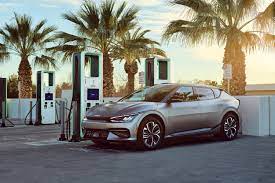
carbon
Imagine a world where the air is crisp and clean, ice caps are no longer melting at alarming rates,
and energy is drawn infinitely from the sun and wind. Achieving net zero carbon emissions is not just
an environmental goal; it is a blueprint for humanity’s survival and prosperity. “Net zero” refers t
balancing the greenhouse gases emitted into the atmosphere with those removed, aiming for no net
increase in global warming contributors. This mission is urgent and complex but also an opportunity
to redefine how societies function.
Understanding Carbon Emissions: A Critical Problem
The term “carbon emissions” encompasses all greenhouse gases (GHGs), including carbon dioxide
(CO2), methane (CH4), and nitrous oxide (N2O), that trap heat in the atmosphere. The current
levels of GHGs are at their highest in 800,000 years, largely due to human activities such as burning
fossil fuels, deforestation, and industrial processes.
Interesting Fact: Just 20 companies are responsible for a third of all carbon emissions globally since
1965. This highlights the role of corporate responsibility in addressing climate change.
The impact of unchecked emissions is evident in rising global temperatures, extreme weather
events, and disruptions to ecosystems. Achieving net zero by 2050, a goal embraced by over 130
countries, is crucial to limiting global warming to 1.5°C above pre-industrial levels, as outlined in the
Paris Agreement.
Key Strategies for Achieving Net Zero
1. Scaling Renewable Energy
Transitioning from fossil fuels to renewable energy sources like solar, wind, and hydropower is the
cornerstone of net zero efforts. Innovations in energy technologies have significantly reduced costs,
making renewables more accessible than ever.
By 2030, the International Energy Agency (IEA) projects the need for 630 GW of solar and 390 GW
of wind installations annually, four times the record set in 2020.
Quirky Fact: The Sahara Desert, if covered with solar panels, could power the entire world 10 times
over.
2. Electrification of Transport and Industry
Electric vehicles (EVs) and electric heating systems are leading the electrification wave. With EV
sales expected to surpass 60% of total car sales by 2030, the shift to cleaner transportation is
accelerating. Industries, too, are transitioning. Electrifying steel and cement production-currently significant sources of emissions-is a top priority. Interesting Insight: Norway offers free EV charging stations and exempts electric car owners from road tolls, making 80% of cars sold there in 2022 electric.
3. Carbon Capture, Utilization, and Storage (CCUS)
CCUS technologies capture CO2 from industrial processes and store it underground or repurpose it
for other uses. While not a panacea, they are critical for industries where emissions are challenging to eliminate. Countries like Iceland are pioneering innovative approaches, such as converting captured CO2 into
rocks.
4. Enhancing Energy Efficiency
Improving energy efficiency across buildings, appliances, and industrial systems can significantly cut
emissions. Retrofitting old buildings, optimizing manufacturing processes, and investing in
energy-efficient technology are low-cost, high-impact strategies.
Fun Fact: Smart thermostats can reduce household energy consumption by up to 15%, saving
money and emissions.
5. Behavioral and Lifestyle Changes
Individual actions can collectively drive significant change. Adopting plant-based diets, reducing
energy usage, and choosing public transport over personal vehicles are impactful steps.
India’s Mission LiFE (Lifestyle for Environment) campaign is a global initiative encouraging people to
adopt sustainable practices. This citizen-centric approach could save an estimated 5% of global
emissions. Quirky Idea: If everyone globally unplugged unused electronics, it would save energy equivalent to 17 large power plants annually.
6. Preserving and Expanding Forests
Natural carbon sinks, such as forests and wetlands, play a vital role in absorbing CO2. Reforestation
projects and protecting existing forests are essential to offset emissions from hard-to-decarbonize sectors. Unique Project: In Brazil, a reforestation initiative is planting 73 million trees to restore the Amazon, one of the world’s largest carbon sinks.
India’s Journey to Net Zero India, the world’s third-largest emitter of CO2, has pledged to achieve net zero by 2070. The country aims to install 500 GW of non-fossil fuel capacity by 2030 and has introduced numerous policies to accelerate clean energy adoption. India is also investing in unique solutions like floating solar farms, which conserve land while reducing water evaporation. Visionary Insight: India’s rapid transition to renewables could save 4 gigatons of CO2 by 2030, equivalent to the annual emissions of the entire EU.
Barriers to Achieving Net Zero
1. Technological Hurdles: Technologies such as hydrogen electrolysers and advanced batteries
require significant development and scaling.
2. Economic Costs: Transitioning to clean energy involves heavy upfront investments, particularly for
developing nations.
3. Equity Issues: Wealthier nations must support poorer ones through financing and technology
transfers to ensure a just transition.
4. Behavioral Resistance: Convincing individuals to alter consumption habits or accept new policies
can be a challenge.
Interesting Fact: Fossil fuel subsidies still total over $400 billion annually, dwarfing the funding for
renewable energy.
Carbon Emissions by the Numbers
– A single transatlantic flight emits as much CO2 as heating a home for a year.
– Producing one kilogram of beef emits 27 kilograms of CO2, while lentils emit less than one
kilogram.
Creative Insight: If the internet were a country, its carbon emissions would surpass those of most
nations. This highlights the importance of sustainable digital infrastructure.
The Path Forward
Achieving net zero is not merely about avoiding catastrophe; it’s about creating a future where
humanity thrives within planetary boundaries. The journey demands collective effort: governments
enacting robust policies, industries investing in green technologies, and individuals adopting
sustainable habits.
Quirky Perspective: Think of net zero as a giant jigsaw puzzle. Each piece, whether it’s a solar
panel, an electric car, or a reusable shopping bag, is vital. The picture is incomplete without
collective action.
Conclusion
The quest for net zero carbon emissions is humanity’s most ambitious project yet-a reimagining of how we live, work, and interact with the planet. While challenges abound, the opportunities are
equally immense. With the right mix of policies, innovation, and public participation, we can chart a path to a cleaner, greener future. Achieving net zero is not just an environmental goal; it is a promise of hope, resilience, and progress for generations to come.
By: Udita Jain
Write and Win: Participate in Creative writing Contest & International Essay Contest and win fabulous prizes.


